SWVA FISHING RIVERS
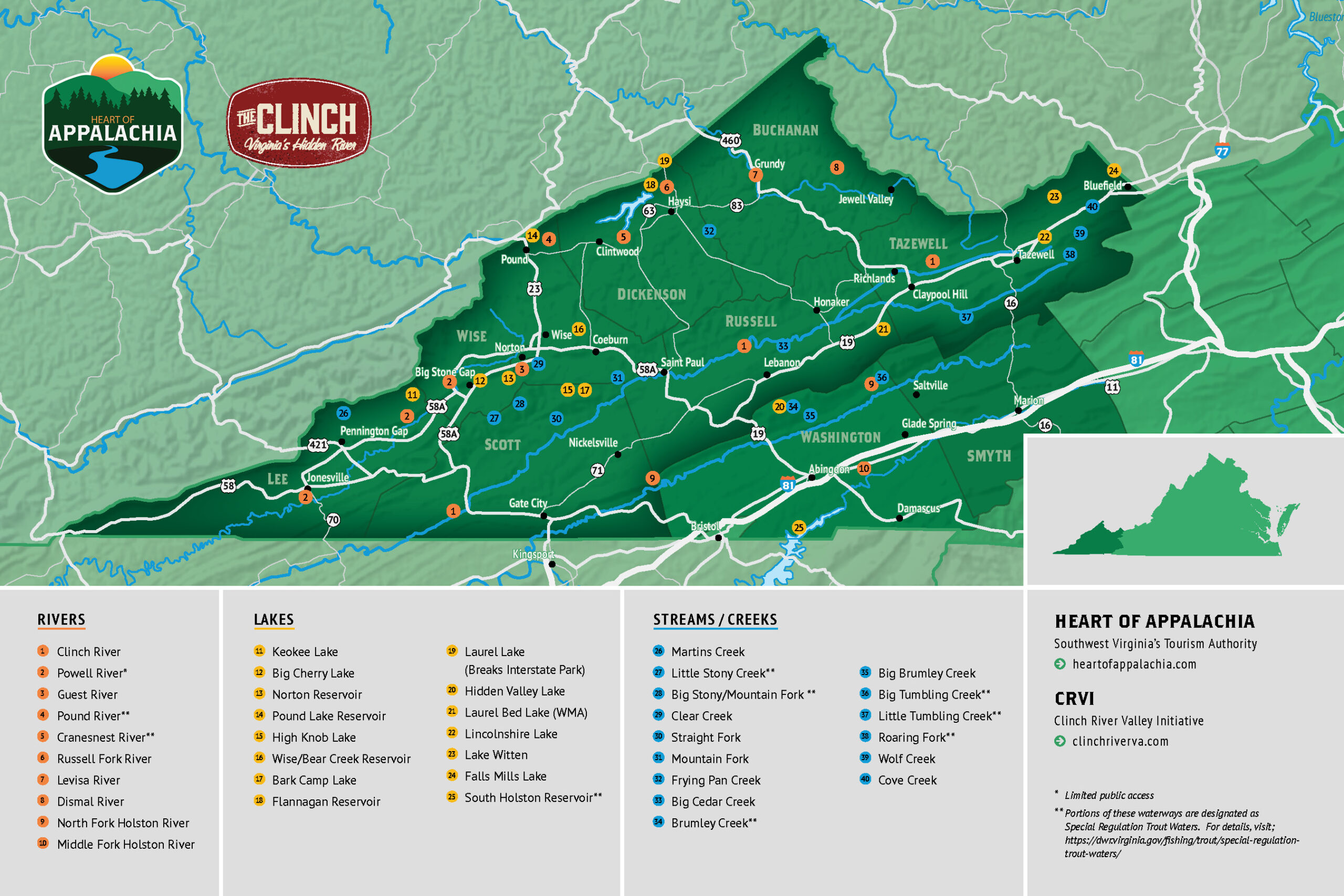
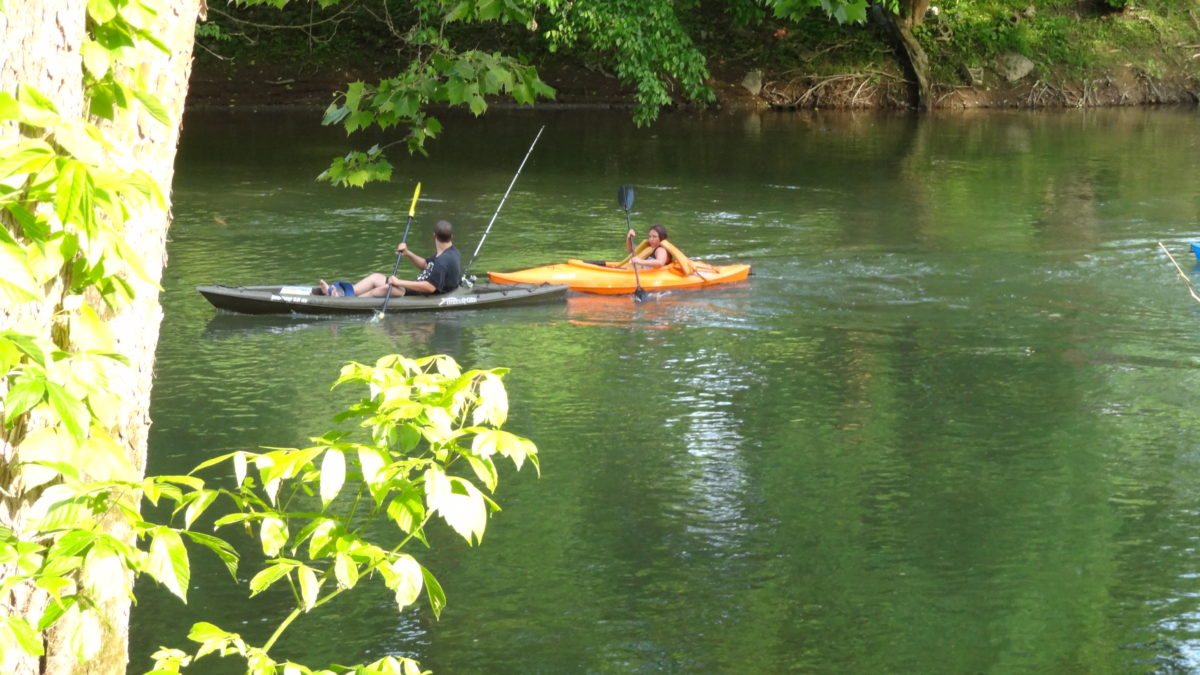
Clinch River (#1)
Large and Smallmouth Bass, Spotted and Rock Bass, Walleye, Sauger*, Black Crappie, Redbreast and Longear Sunfish, Longnose Gar, Musky/Muskie, Freshwater Dum, Redhorse Sucker**, Carp, Bluegill
The Clinch River rises near Tazewell, Virginia, and flows southwest for more than 300 miles through the Great Appalachian Valley, gathering various tributaries, including the Powell River, before joining the Tennessee River in Kingston, Tennessee. The Virginia portion is the crown jewel of SWVA traveling over 135 miles, through portions of Tazewell, Russell, Wise, and Scott counties. The Clinch is the most biodiverse waterway this side of the Amazon River. It is home to about 50 species of mussels, which is more than any other river in the world and over 100 species are non-game fish – minnows and darters that sport brilliant colors and play a vital role in the survival of other fish and mussel species. But, the variety of sport fish is what makes the Clinch the perfect destination for anglers.
Access/Float Points
Blackford to Puckett Hole
Distance: 7.3 miles Gradient: 10.6 ft/mile
Blackford Bridge Boat Launch, Co Rd 641, Honaker, VA 24260 to New Garden, Virginia – Google Maps
Puckett Hole to Nash’s Ford
Distance: 9 mile Gradient: 17.2 ft/mile
36.9699700, -82.0137880 to Castlewood, Virginia – Google Maps
Nash’s Ford to Cleveland
Distance: 8 miles Gradient: 7.1 ft/mile
36.9670850, -82.0790860 to 36.9404250, -82.1598820 – Google Maps
Cleveland to Carterton
Distance: 7.5 miles Gradient: 3.0 ft/mile
36.9398770, -82.1597100 to 36.9152100, -82.2215040 – Google Maps
Carterton to Saint Paul
Distance: 8 miles Gradient: 2.5 ft/mile
Carterton Boat Launch, Co Rd 614, Lebanon, VA 24266 to 36.9030760, -82.3075820 – Google Maps
Saint Paul to Burton’s Ford
Distance: 4.2 miles Gradient: 1.6 ft/mile
36.9030760, -82.3075820 to 36.8888200, -82.3390960 – Google Maps
Burton’s Ford to Miller’s Yard
Distance: 7.1 miles Gradient: 11.5 ft/mile
36.8907420, -82.3394390 to 36.8549300, -82.4265000 – Google Maps
Miller’s Yard to Dungannon
Distance: 3.7 miles Gradient: 10 ft/mile
36.8541450, -82.4265580 to 36.8310810, -82.4621950 – Google Maps
Dungannon to Route 659
Distance: Variable Gradient: 10 ft/mile
36.8310810, -82.4621950 to 36.8253630, -82.4621770 – Google Maps
Route 659 to Fort Blackmore
Distance: 8 miles Gradient: 3.1 ft/mile
36.8252610, -82.4620980 to VA-72, Virginia – Google Maps
Fort Blackmore to Hill Station
Distance: 7.9 miles Gradient: 1.9 ft/mile
VA-72, Virginia to 5, Virginia – Google Maps
Hill Station to Clinchport
Distance: 5.2 miles Gradient: 2.0 ft/mile
36.7248200, -82.6431070 to 36.6788830, -82.7414700 – Google Maps
Clinchport to Speer’s Ferry
Distance: 2 miles Gradient: 3.2 ft/mile
36.6780570, -82.7397540 to 36.6413900, -82.7182000 – Google Maps
Speer’s Ferry to State Line
Distance: 9 miles Gradient: 2.5 ft/mile
36.6396360, -82.7386380 to 36.6151360, -82.8373370 – Google Maps
For detailed information about the access points, river terrain, specific fishing detail, and more, visit https://dwr.virginia.gov/waterbody/clinch-river/
Cranesnest River (#5)
37.212051 -82.376259, Clintwood
Walleye, Trout
Located just 6.1 miles from Clintwood, from Route 637 to the Flanagan Reservoir Cranesnest Launch Ramp in Dickenson County, a distance of approximately 10.7 miles, is designated as the Cranesnest State Scenic River, a component of the Virginia Scenic Rivers System. The Cranesnest River Trail follows the river, from its trailhead in Clintwood, running several miles in length to the river’s confluence with John W. Flanagan Reservoir. The trail meanders alongside the river in some areas, but climbs upward along a bench that overlooks the river as well. Parts of this trail traverse old-growth hardwood forests, rhododendron thickets, and river bottom woodlands.
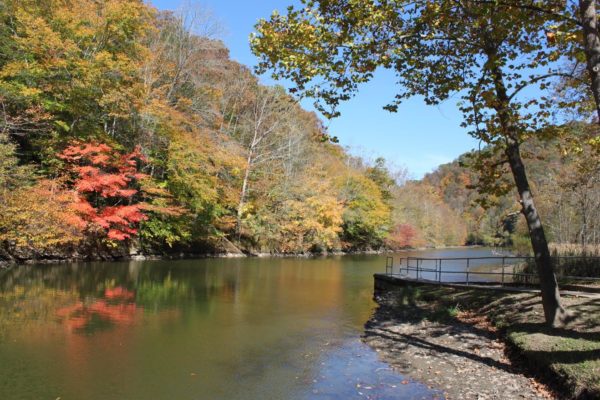
Dismal River (#8)
37.234419, -82.040767, Rt 638/Dismal River Rd, Oakwood
Brown and Rainbow Trout, Smallmouth Bass
Another waterway that may be categorized either a stream or river, locals side with river so we will too. Located east of Vansant, the Dismal River is part of the 2021 Catchable Trout Stocking Plan and a beautiful spot to cast from the bank or wade in.
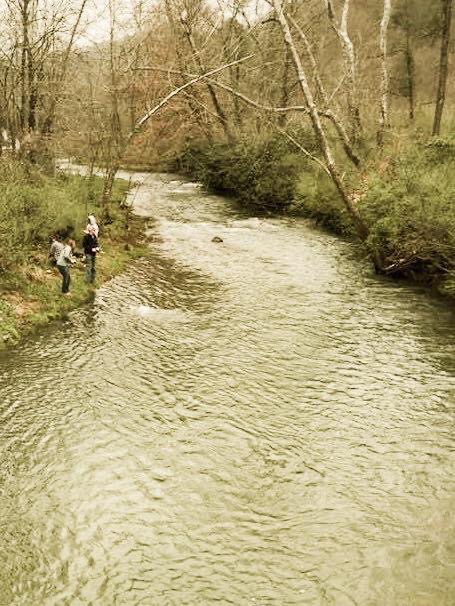
Guest River (#3)
36.923240, -82.451440, Guest River Gorge
Largemouth Bass, Smallmouth Bass, Redbreast Sunfish
The Guest River is actually a short tributary of the Clinch River and flows for nearly its entire length in Wise County. It rises in the north-central part of the county and flows initially south-southeastwardly to the city of Norton; then eastwardly to the town of Coeburn; then southeastwardly for the remainder of its course. It flows into the Clinch on the common boundary of Wise and Scott Counties. Portions of the river traverse through the Jefferson National Forest. The Guest River’s lower course below Coeburn is paralleled by the Guest River Gorge Trail, formerly the Interstate Railroad.
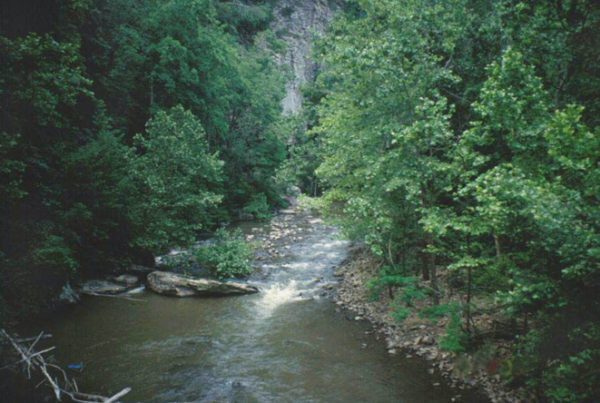
Levisa River (#7)
37.277818, -82.100422, Rt 460/Riverside Drive, Grundy
Smallmouth Bass, KY Spotted Bass, Rock Bass, Channel Catfish
The Levisa Fork/River is a tributary of the Big Sandy River, approximately 164 miles long, in southwestern Virginia and eastern Kentucky. It rises in the Appalachian Mountains of southwestern Virginia, in eastern Buchanan County, near Grundy and flows through downtown.
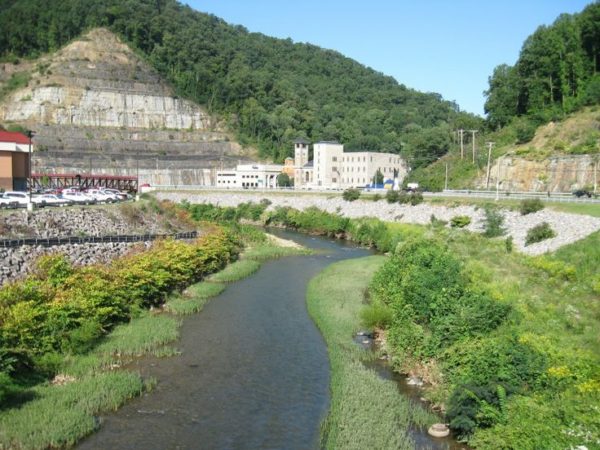
Pound River (#4)
37.19646, -82.44012, Pound River Campground, Clintwood
Brown and Rainbow Trout, Smallmouth Bass
This river runs from the North Fork Pound Reservoir to the John W. Flannagan Dam. The Pound River below Flannagan Dam is the largest tail-water trout fishery in southwest Virginia. The cold-water release from the dam provides a unique habitat that is suitable for trout in this 1.6-mile stretch of the Pound River, before it empties into the Russell Fork River. DWR manages this unique resource to provide both stocked trout and special regulation trout fishing opportunities. The first 0.4 miles directly below the dam is a stocked trout area and is managed as part of the Virginia catchable trout program. This section is a category “A” stocked trout water and is stocked with legal size trout (7 inches or larger) eight times from October through May. The remaining 1.2-miles below the stocked area begins at a sign posted on the riverbank that marks the start of the special regulation section.

Powell River (#2)
Spotted Bass, Smallmouth Bass, Rock Bass, Redbreast Sunfish, Musky, Channel Catfish
The headwaters of the Powell River are located in Wise County, and the river flows approximately 80 miles through Wise and Lee counties before entering the State of Tennessee. The Powell provides a variety of good fishing opportunities, however, this river has limited public access to be considerate of private property when finding that perfect fishing hole. Any bridge crossing a river where a canoe or small boat can be slid into the water is considered public access. Anglers and floaters launch and take out at crossings, including US 58, Alternate 58, and VA 421, as well as several secondary roads. The Yokum Station access ramp is located near Dryden at the intersection of Veterans Memorial Hwy and Powell River Road. Martins Creek and the North Fork of the Powell River are both stocked with trout. Martins Creek is located off of Martins Creek Road in Rose Hill.

Russell Fork River (#6)
37.204795, -82.294357, Haysi
Smallmouth Bass, Brown & Rainbow Trout
The Russell Fork River winds along the border of Virginia and Kentucky. It forms the deepest gorge east of the Mississippi River and is known as the “Grand Canyon of the South.” The gorge and river are the main attractions of Breaks Interstate Park, which draws more than 350,000 visitors per year. The Russell Fork is a 51.9-mile-long (83.5 km) tributary of the Levisa Fork.
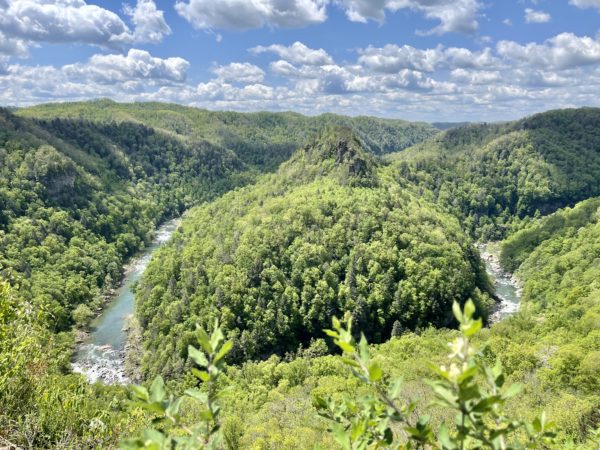
Holston River
North Fork (#9)
From the town of Saltville downstream along the North Fork there is an exceptional smallmouth bass fishery. It routinely produces smallmouth up to five pounds. Sunfish, rockbass, carp, and channel catfish fishing are also good. This river is still under a health advisory from mercury contamination. Fishing is allowed, but the fish must not be consumed.
Middle Fork (#10)
The headwaters of the Middle Fork Holston River are located near the Smyth-Wythe County line in Southwest Virginia. The river flows approximately 56 miles through Smyth and Washington counties and connects with the South Fork Holston River to form South Holston Reservoir. The river has many different sport fish species for all types of anglers. In the upper sections of the river near the towns of Atkins and Marion there are two designated stocked trout areas.

For our free SWVA Fishing Guide, let us know where to send it.
Fishing
Request for Fishing Guide